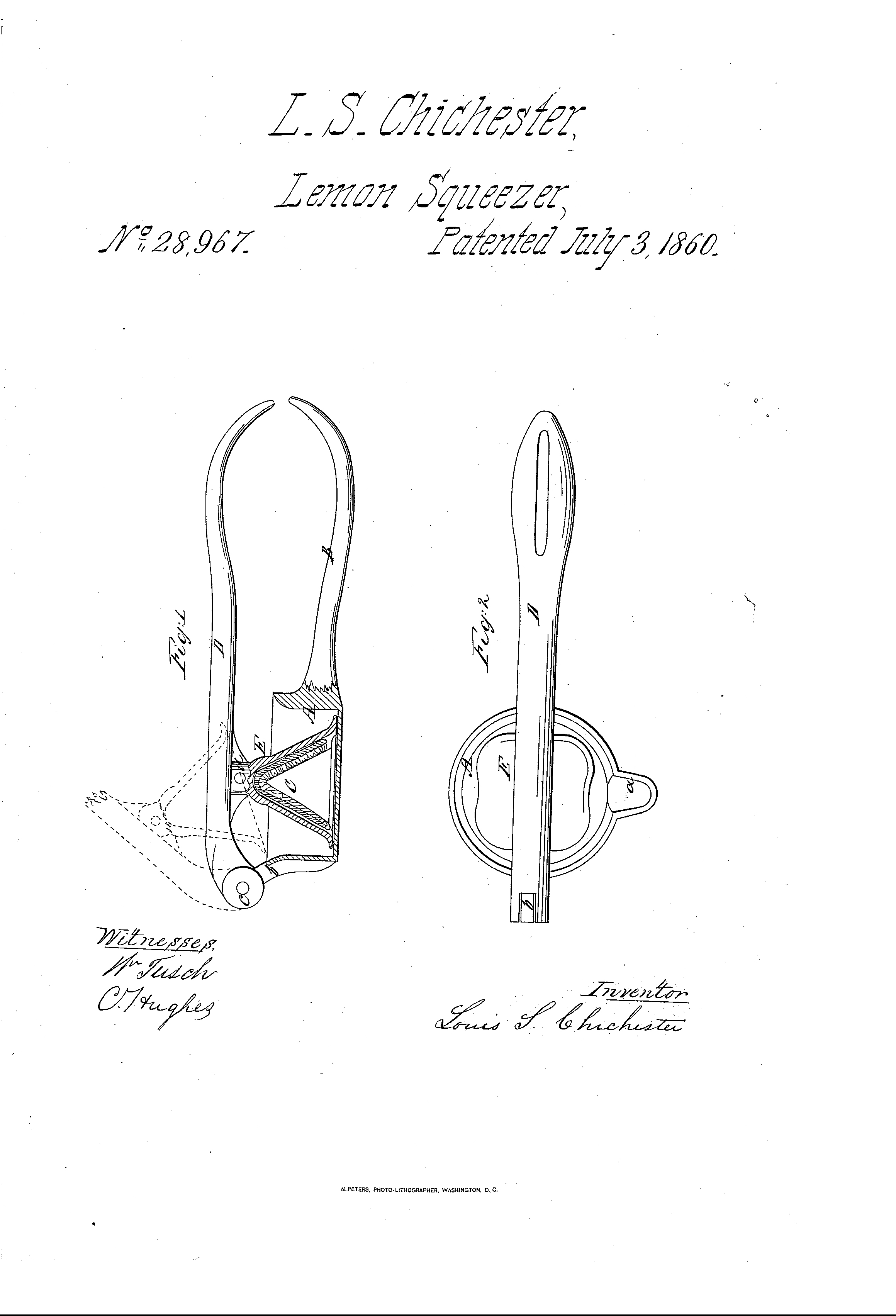It is not a secret than the first tool to squeeze a lemon was our own hands, up to the human being found the way to improve this activity through the history
End of the 19th century a large number of patents filed on a novel lemon squeezers. to date (june 2007) listed in the United States patent and trademark office, over 200 patents for lemon squeezers, the majority of these patents pending between 1860 and 1910
L.S. Chichester 1860
The oldest U.S. patent was on the 3rd of Lewis S. Chichester Signed in July 1860. It was a pincer-shaped model made of cast iron. After the specification of the model Chichester over conventional presser was to operate with less effort.
G. R. Wilson, Jr. 1886
This lemon squeezer was made in iron, having a penknife, such a way the user puts the lemon in it pressing the top agains it, the lemon could get easily cut in two pieces and its juice could fall to the container in this case a glass.
J. A Hurley 1887
This design as we can see, becomes to change its design, its shape, size, and complexity, using a antirust material, iron, and probably bigger, than the one before, the Hurley lemon squeezer use a mechanic system, based in arm, articulation and pression, changing the penknife on the bottom of the arm, leaving a crib intended for the whole lemon
W.O. Dunlap 1890
the lemon squeezer from W.O Dunlap, from what i can appreciate was made in two different materials, wood (the base) and iron, not too much different from the other ones, this juicer press, has a long arm, that press the lemon against the penknife, with a leaky surface, just is not clear if that part is removable, or how i fill the glass with the juice i squeezed.
C. W. Barrett 1893
J. T. White 1896
C. Morgan 1898
E. Walker 1897
P. Filler 1910
F. Carroll 1915
Art Deco. Christofle. France 1920
Curiosity
Dublin, Republic of Ireland, Trinity College, 1857
During Class Day in 1857, a senior named William Niles presented a wooden lemon squeezer to the Class of 1859 as recognition of the sophomores’ “aggregate excellence in scholarship” and “moral character.” From that day forward, every Class Day included a ceremonial passing down of the lemon squeezer to the rising class that proved the most popular. It didn’t take long for a “spirited rivalry” to build between first-years, sophomores, and juniors.
In 1895, tipped off (and
ticked off) that the squeezer was going to the Class of ’97, representatives of
the Class of ’96 staged a brazen theft of the squeezer from the speaker’s
podium, triggering a free-for-all, cross-campus chase that ended with a ’96 man
galloping away with the squeezer on horseback. Over the next century, more
substitute squeezers were stolen and replaced and re-stolen than we can count.
The latest version of the lemon squeezer makes its only appearance during
Convocation, when the College president squeezes a fresh lemon to make a toast
to the incoming class, followed by lemonade for all.
L'ultimo

















I am very happy after watching this video because i tried this at my work shop and seriously it was truly the same as you guys have mentioned in this video thanks for sharing this information with us..
ResponderBorrar